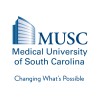
Cytokine Registry Database of Stroke Patients
Acute StrokeAcute Ischemic Stroke2 moreVarious molecules (cytokines: interleukins, interferons and neural proteins) found in human and animal blood are reported to be elevated in acute stroke (Ischemic and hemorrhagic). Cytokines can be pro-inflammatory or anti-inflammatory. There are studies confirming level changes in serum of humans in the setting of several rheumatologic and cardiovascular diseases. As new molecular markers (cytokines and neural tissue markers) are established in scientific literature, stroke scientists are interested to evaluate the role of these in the pathophysiology of stroke. Investigators intend to study the role of these molecules in the development of stroke. Acute stroke treatment has advanced considerably in the last 10 years with the establishment of comprehensive stroke centers and approval of neuro-interventional techniques. However, the molecular advancement in stroke pathogenesis has yet to reach a milestone in the world of stroke treatment. In our opinion, creating a database of acute stroke patients containing all pertinent medical demographics and clinical information along with the laboratory data, molecular levels of pertinent cytokines/neural factors from consenting patients, will help us define and delineate the most relevant molecules that are altered in acute stroke patients and can help us further improve us understanding of the role of these in acute stroke and thereby hopefully help in the improvement of our understanding and management of stroke. Moreover, analyzing the cytokines in stroke and ICH patients would help understand their role in the acute phase, which may become potential therapeutic adjuncts for tPA and endovascular thrombectomy.

The Care of Stroke in Ziekenhuis Oost-Limburg
StrokeA stroke occurs when the blood circulation is hampered due an ischemic or hemorrhagic event. Previous, a stroke was treated only with anti-aggregation. Over time, multiple studies have showed a positive effect of intravenous thrombolysis with rt-PA (recombinant tissue plasminogen activator) in comparison with the standard treatment (anti-aggregation). Since 2015, thrombectomy was proven to have an added value in combination with thrombolysis. Thrombectomy is an endovascular technique where the thrombus is removed or fragmented. Diagnosis and treatment of stroke will have a significant impact on the health-economic status of the patient. However, little data is known. Unfortunately, the outcome after diagnosis with a stroke is not well documented. Therefore, this follow-up study over a time period of one year, will give us a sufficient amount of data to evaluate patients diagnosed with a stroke in the hospital of Genk.

Mechanisms of Ischemic Stroke in Cancer Patients
StrokeCancerThe purpose of this study is to better understand the causes of stroke in people with cancer. Active cancer increases the risk of stroke. The investigators do not know exactly why this occurs but one possible reason is that people with cancer may have thicker blood than people without cancer. Thick blood can sometimes cause blood clots to form in the heart, which can then travel to the brain and cause stroke. This study is being done to help figure out why this and other causes of stroke occur in people with cancer. The investigators expect that information from this study will help doctors to more effectively prevent and treat stroke in individuals with cancer.

Botulinum Toxin A Associated Costs in the Treatment of Upper Limb Spasticity Post Stroke
Upper Limb Spasticity Post-StrokeThis study aims to estimate the costs of botulinum toxin A utilization in standard practice for the treatment of upper limb spasticity post-stroke in Portugal. It will consider the three most used locally available brands of botulinum toxin A which show similar efficacy and safety profiles thus making it relevant to understand if choosing between one or another brand can depend directly on economic factors. The study will estimate direct and indirect drug-associated costs as determinant variables for the price of each drug and the standard drug dose used in clinical practice.

Assessment of Patient Reported Health Status Questions Via Four Different Methods of Administration,...
StrokeCerebral Infarction5 moreA Patient Reported Outcome Measure (PROM) is a questionnaire that asks patients for their views on their own health or the impact of healthcare they have received on their health and quality of life (RCN, 2011). The benefit of PROMS is that they gather information from the patient's perspective, which offers great potential to improve the quality and outcomes of health services (Department of Health 2011). There is a PROM (the PROMIS-10 Global Health) and a number of extra questions that are recommended for use in people who have had a stroke by the International Consortium for Health Outcomes Measurement, but the best way of delivering these questions for stroke survivors is unknown. At present, the NHS in England, Scotland and Wales are required to offer every stroke survivors a 6 month post stroke follow-up appointment. Currently, the information collected at the 6 month review is not from the patient's perspective and the best method of collecting this information has not been established. The Sentinel Stroke National Audit Programme (SSNAP) which is led by the Royal College of Physicians in London promote the 6 month follow-up assessment. SSNAP recognise that currently 4 different methods of 6 month follow-up appointment occur. The current methods in use are face-to-face assessment, telephone interview, online questionnaire or postal questionnaire. The aim of this research is to understand if there is a difference between these 4 methods of delivering these questions in people who have had a stroke. As part of the 6 month review this research study will assess the response rate for 15 Patient Reported Health Status questions across the 4 recognised methods of delivery; Face-to-Face Telephone Online Post To conduct this research study a sample of 808 stroke survivors will be asked to take part in the research. From these 808 people, 202 participants will be randomly assigned to each method of administration (Face-to-Face Interview, Telephone Interview, Postal Questionnaire and Online Questionnaire). The questionnaires received by the research team will not record any personally identifiable information. The data will then be utilised by the researchers for statistical analysis in order to identify, which method of the 4 methods of administration, under investigation, is the most acceptable for stroke survivors. The conclusions of this research will inform the roll-out of the most appropriate method of delivering the 6 month stroke follow-up review for stroke survivors.

Electrical Stimulation Combined With Motor Training on EEG-EMG Coherence and Motor Function in Individuals...
StrokeThis study investigated whether electrical stimulation (ES) prior to a hand function training session for a total of eight weeks can better improve neuromuscular control and hand function in subacute stroke individuals and change electroencephalography-electromyography (EEG-EMG) coherence, as compared to the control (sham ES).

Impact of HIV-infection on Clinical Characteristics and Outcomes on Stroke in Uganda
HIVStrokeThe investigators will recruit participants from three tertiary care hospitals in Uganda into an observational cohort study of people living with HIV/AIDS (PLWHA) and HIV-uninfected persons matched for gender and residency, presenting with CT-confirmed stroke. We will collect socio demographic, clinical, laboratory, radiologic, cardiac, and clinical neurologic disease measures to investigate the effect of HIV-infection on 1) clinical and radiologic presentation, 2) risk factor profiles; and 3) stroke outcomes (death or disability).

The Prehospital Selection of Acute Stroke Patients
StrokeThe aim of this study is to develop and validate a simple prehospital stroke scale, which would predict the presence of large vessel occlusion (LVO) in patients with acute stroke. This study prospectively evaluates the predictive value of a new simple pre-hospital scale (FAST PLUS test) for the presence of large vessel occlusion in anterior intracranial circulation. The FAST PLUS test consists of two parts: the first is the well-known FAST test, which is employed in all possible cases of stroke occurrence. This test consists of the following items: Speech (scored 0-1), Facial palsy (0-1), any failure of Arm motor function (0-1), and Time (0-1). The second part of FAST PLUS test evaluates only the presence of severe arm or leg motor deficit (scored 0-1) and unilateral occurrence of its motor function deficit (scored 0-1). The FAST PLUS test will be used prospectively at the place of stroke onset by trained medical emergency technicians. The first objective of study is to evaluate the sensitivity, specificity, and the positive and negative predictive value of the test which relate to the presence of occlusion of intracranial artery (intracranial carotid artery, T occlusion and occlusion of Middle Cerebral artery segment M1 and M2). CT angiography can only diagnose the LVO. The second objective of this study is to assess inter-rater variability among stroke specialists and emergency technicians, concerning the presence of severe motor arm or leg deficit. The third objective : After implementation of the FAST TEST to clinical practice, we aim to achieve the acceleration of transport time in FAST PLUS positive patients via direct transport to Comprehensive Stroke Center to mechanical thrombectomy.

Examining Measurement of Behavioral Neglect Post Stroke
StrokeHemispatial NeglectThe purpose of this study is to examine measurement of unilateral neglect post stroke. Although a number of clinical assessments are used to measure neglect, it is unclear whether items from some of the most commonly used assessments are able to effectively and comprehensively measure neglect. This study will determine whether these assessments measure different aspects of neglect and whether items from various neglect assessments can be combined to more effectively measure neglect.

Neuroactive Steroids in Acute Ischemic Stroke
Ischemic StrokeDespite several scientific and technological advances, there is no single neuroprotective treatment that can reverse the brain damage after acute ischemic stroke (AIS). Neuroactive steroids are cholesterol-derived hormones that have the ability to modulate the normal and pathologic nervous system employing genomic and non genomic mechanisms. In this work, we first investigated if AIS affects the plasma concentration of five neuroactive steroids (cortisol, estradiol, progesterone, testosterone and 3-alpha androstenediol glucuronide). Second, we studied if levels of circulating steroids associate with neurological, cognitive and functional outcome in a cohort of 60 to 90 year-old male and female patients with AIS. For this purpose, we recruited patients who were hospitalized at the Emergency Room of the Central Military Hospital within the first 24 hours after stroke onset. We designed two experimental groups, each one composed of 30 control subjects and 30 AIS patients, both males and females. The assessment of neurological deficit was performed with the NIHSS and the tests used for the functional and cognitive status were: (1) modified Rankin Scale; (2) Photo test and (3) abbreviated Pfeiffer's mental status questionnaire.
